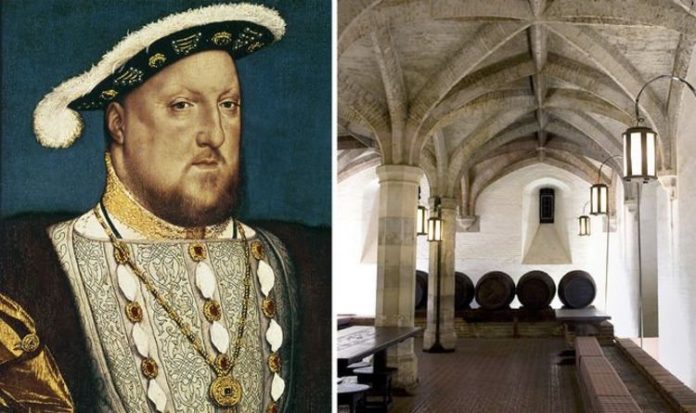Anne Boleyn ‘did conspire to kill Henry VIII’ reveals expert
The brutal king is best-known for having six marriages, initiating the English Reformation and beheading anyone who went against him, but remains from his reign show the true extent of his greed and lust for power. Over the weekend, a section of one of Henry’s 16th-century castles collapsed into the sea following bad weather, just days before remedial work was due to start. Hurst Castle, near Milford-on-Sea, Lymington, was one of 55 houses and palaces owned by Henry.
And the grandest of them all was revealed by historian Dr Suzannah Lipscomb during Channel 5’s ‘London: 2,000 Years of History’ documentary.
She said: “Henry’s impact on London began in an area that is now called Whitehall, in Westminster.
“Today it houses government offices, but in the Tudor period, there was an enormous mansion here that belonged to the King’s advisor, Cardinal Thomas Wolsey.
“In Tudor London, he was the second most influential man after the King – he was Lord Chancellor, he was head of the Catholic Church in England and he built himself fantastic palaces.
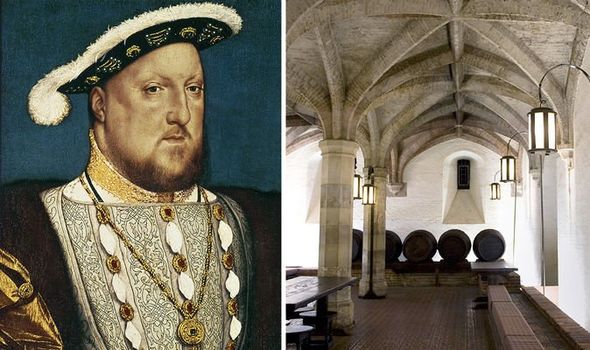
Remains of Henry VIII’s palace hide beneath London (Image: GETTY)
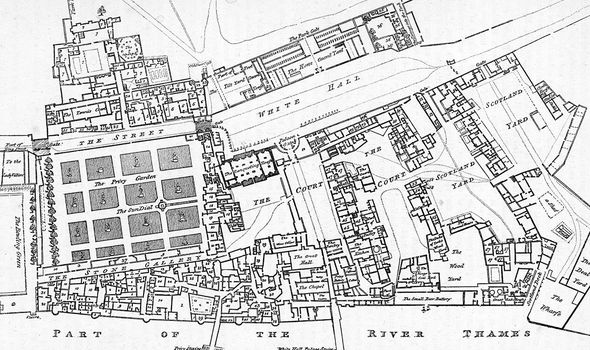
A map of the old palace, built in the 16th-century (Image: GETTY)
“That was his first mistake, but added to that – in 1529, Henry wanted to marry his mistress Anne Boleyn and Wolsey failed to get an annulment of Henry’s marriage to Catherine of Aragon – that was his second.
“In retaliation, Henry had Wolsey charged with treason and seized the Cardinal’s desirable London residence for himself.”
The expert went on to explain how Henry made it his own.
She added: “He extended it massively, creating his Whitehall Palace – it was incredible – the largest palace in Europe and the new centre of power in the capital.
“Tragically, Henry VIII’s palace was gutted by fire in 1698, but not all of it was lost – I’m here at the offices of the Ministry of Defence (MoD) at Whitehall, and I’m very lucky to get access.
READ MORE: Royal fury: Henry VIII ‘manipulated’ ‒ but scholar who ‘ripped into him’ avoided execution
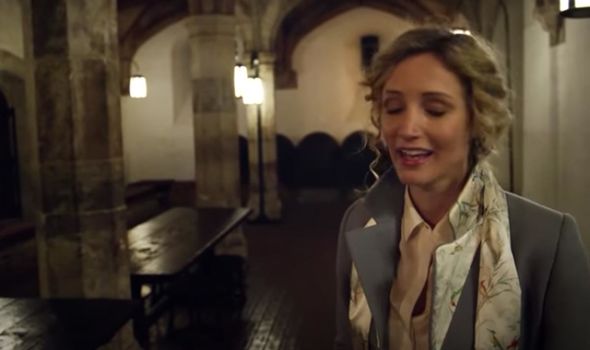
Historian Dr Suzannah Lipscomb was given special access (Image: CHANNEL 5)
“I’ve been given permission to see something I’ve never seen before – this area is off-limits to the public and filming is very carefully controlled for security reasons.
“I’m going down below the MoD’s modern corridors to see what remains of Henry VIII’s lost palace.
“This is incredible, it is a vaulted chamber and it was Henry’s wine cellar from his Whitehall Palace.”
Whitehall Palace was the main royal residence from 1530 to 1698 when most of its structure was destroyed in a fire.
But Dr Lipscomb detailed how it was once a commanding complex and why it was one of Henry’s favourite spots.
She continued in 2020: “This is a palace that dominated this area of London and this is the only part that survives of it. It is a place where he lived, he married and he died.
DON’T MISS
Bible prophecy fulfilled? Sea of Galilee earthquakes ‘signal Jesus’ [CLAIM]
Garden of Eden FOUND? How archaeologist uncovered ‘true location’ [VIDEO]
Bible BOMBSHELL: How archaeologists found ‘Jesus’ HOME’ [EXPLAINED]
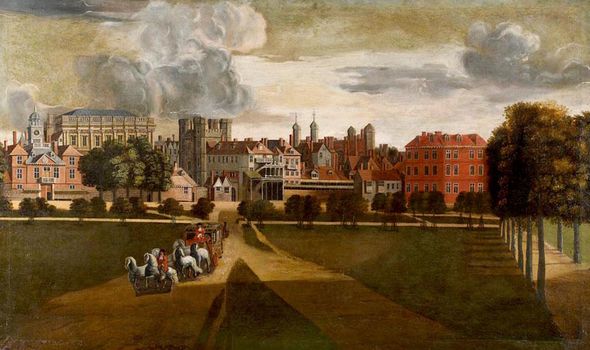
The palace was burnt down by a fire in 1698 (Image: GETTY)

It once spanned over 23 acres across London (Image: CHANNEL 5)
“We know that he used to come down to his wine cellar and sit down to gamble at cards with his men – here I am in the same spot.
“By the time it burnt down Whitehall Palace contained more than 1,500 rooms and stretched over an area from Trafalgar Square down to Downing Street and out to the Thames.
“Here is a modern map of London, it stretched over this whole area, it covered some 23 acres of prime London real estate.
“He had created an enormous private playground, but it was just the start. His insatiable greed would go on to utterly change the shape and character of London.”
Beginning in 1938, remains of the palace were redeveloped with the building now housing the MoD.
The wine cellar was found to interfere not just with the plan for the new building but also with the proposed route for a new road.
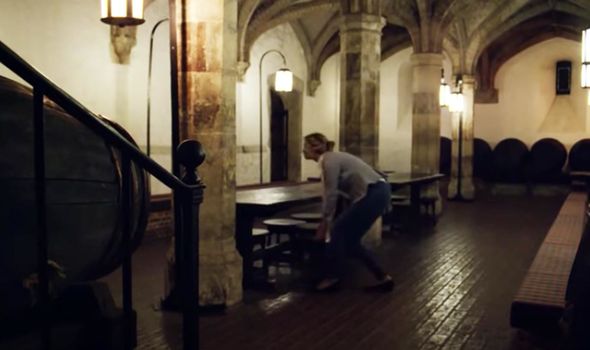
The king is said to have played cards in his wine cellar (Image: CHANNEL 5)
Following a request from Queen Mary in 1938 and a promise in Parliament, provision was made for the preservation of the cellar.
Accordingly, it was encased in steel and concrete and relocated nine feet to the west and nearly 19 feet deeper in 1949, when building was resumed at the site after World War 2.
This was carried out without any significant damage to the structure and it now rests within the basement of the building.
Its exposure comes after a breakthrough in archaeology to pinpoint the first Britons led to the discovery that lions and hippos once inhabited the capital.
Remains of wild cats, wolves, elephants and hippos were all found buried beneath the streets in the 19th century initially suggesting it was possible.
But while mapping the UK’s history, experts also found that Britain’s climate has drastically changed over time, with some parts being warm enough to attract exotic animals.
They found that for long periods conditions were favourable, but at others, Britain was gripped by severe cold stages and large ice sheets covered much of the landscape, with little life able to survive in the frozen wilderness beyond.
